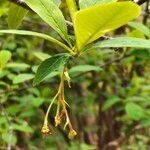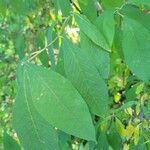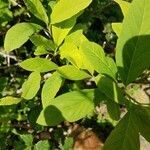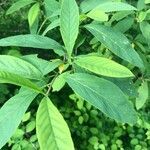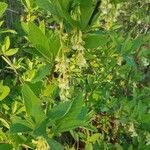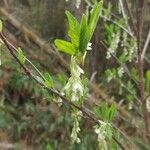A deciduous shrub. It grows about 2-3 m high. It forms suckers. The branches are slender and erect. They are smooth and grey. The leaves are oblong and glossy and green. They are grey and slightly downy underneath. The male and female flowers are on separate plants. The flowers are white. They hang along stalks. The fruit are like plums. They become purple when ripe.
